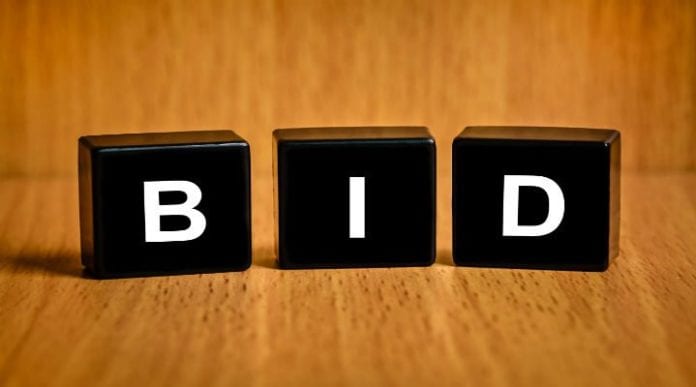The ongoing millimeter wave spectrum auction is moving to five rounds of bidding each day, up from three, as bidding slows to a trickle with $6.7 billion raised after 38 rounds.
Today is the first day of five bidding rounds, and the bidding total raised over the course of this week is around $600 million as of round 38 — a marked decrease in momentum. Winter weather in the Washington, D.C. area earlier this week briefly disrupted the bidding rounds on Tuesday, but the three daily rounds resumed as normal on Wednesday and Thursday.
More than 14,100 licenses are up for grabs across three mmWave bands in Auction 103: the upper 37 GHz band (37.6-38.6 GHz), the 39 GHz band (38.6-40 GHz) and the 47 GHz band (47.2-48.2 GHz). The licenses are based on a Partial Economic Area geographic basis which divides the country into 416 sections.
There is more spectrum available at 39 GHz than in the other two bands, with 14 blocks of 100 megahertz available, or 5,824 individual licenses. The 47 GHz and upper 37 GHz bands each have 4,160 licenses available, or 10 blocks of 100 megahertz in each PEA. The FCC has authorized either fixed or mobile use in the bands, and the commission has emphasized the sheer amount of spectrum available: at 3,400 megahertz, it’s the largest amount of spectrum ever offered in an auction.
The FCC has divided the spectrum into two categories of licenses: 24 100-MHz licenses in the 37 and 39 GHz frequency blocks, the MN or M/N licenses, and ten 100-MHz licenses in the 47 GHz frequency block, the P licenses.
As is typical, licenses in dense urban areas — New York City; Los Angeles and San Francisco, California; Chicago, Illinois; and the Baltimore-Washington D.C.-area — were the most hotly contested from the start. The licenses covering New York City have the highest posted prices and appear to have settled, at prices up to $37.5 million. However, according to analysis from Sasha Javid, COO at the Spectrum Consortium and former chief data officer and legal advisor on the FCC’s Incentive Auction Task Force, the most expensive licenses on a per-meghertz/POP basis are in Milwaukee, Wisconsin; Valentine, Nebraska; and Haskell, Texas.
There are 35 qualified bidders competing for spectrum in Auction 103, which, like Auction 102, is using a clock format for the first phase. In the clock phase, bidders compete for the license type they desire, with prices automatically increase each round, until bidders’ demand for licenses at a certain price matches the supply. An assignment phase for specific spectrum blocks will follow the clock phase.

